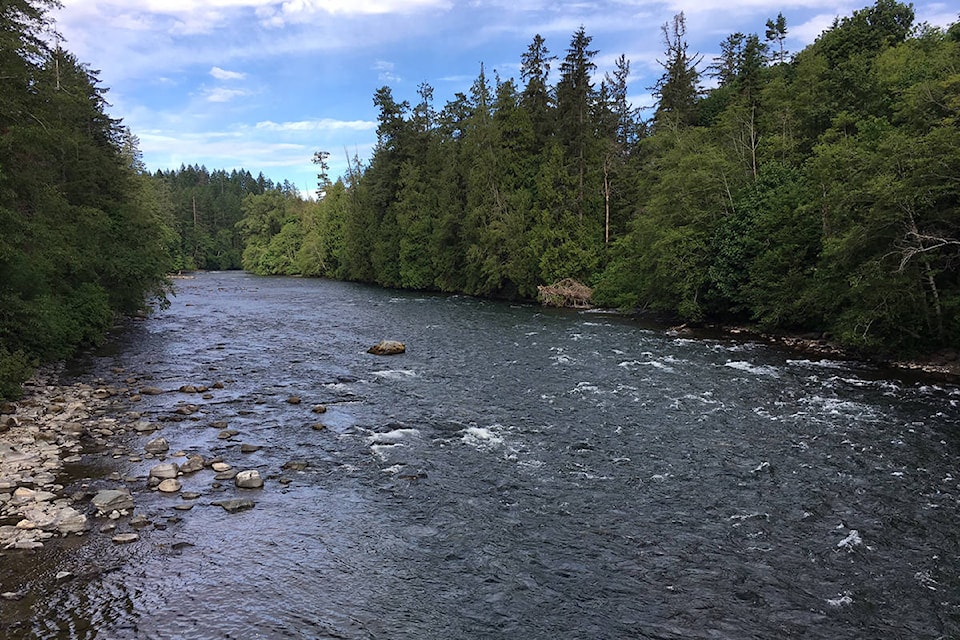Dry weather conditions since February, a record low rainfall for May and the lowest summer water supply forecast in 60 years has BC Hydro eyeing the fall salmon migration and spawning period on the Campbell River with some concern.
BC Hydro is continuing to closely monitor the water conditions in the Campbell River watershed that has been helped in the past month by water inflows from snowmelt but the summer season and the fall salmon migration and spawning period continue to be the focus of concern.
The very dry weather conditions since February have been followed up by a record low rainfall for the month of May, according to a Campbell River system update from BC Hydro.
The upper watershed precipitation for the month of May was only 16 per cent of average, BC Hydro spokesperson Stephen Watson says in his BC Hydro operations update issued Tuesday. Precipitation has been sparse since February. On average, from February through May, we would see about 559 mm of precipitation. In 2019, we only had 268 mm over that period.
In addition, the snowpack looks to be depleted in the next week or two, and is well below normal. About 1000 mm of snow to water equivalent has melted in the upper watershed since the beginning of May.
“Our February to September water supply forecast is updated each month,” Watson says. “Our updated June water supply forecast for the period of February to September is showing 64 per cent of normal. The residual forecast for water inflow from June to September is 51 per cent of normal. This is the lowest water supply forecast in about 60 years of our records.”
On March 25, BC Hydro reduced the Campbell River flow to about 69 cubic metres per second (m3/s). On May 23, over two days, the company reduced the flow down to 58 m3/s. Then last week through Monday this week, it lowered the river flow in 2 m3/s steps to 40 m3/s.
“This is below the preferred level of 80 m3/s that keeps the riverbed fully covered with water,” Watson says. “Each time we reduced flows, we had our biologists on the river to move fish that may get isolated back into the Campbell River mainstem.”
The final flow reduction down to about 30 m3/s will happen later this month. Since February, BC Hydro has been in close communication with the Department of Fisheries and Oceans Canada.
These river flow reductions have occurred due to the lack of water. This has somewhat helped summer recreation users, and may save a little water storage for early fall for salmon migration and spawning.
Water inflows into the Campbell River system are now about 40 to 70 m3/s and dropping with the depleting snowpack.
The water level in Upper Campbell Reservoir/Buttle Lake is currently 216.4 metres. The summer recreation target from mid-June to early September is 217 m to 220.5 m. BC Hydro forecasts, despite these efforts to further conserve water, and unless there is a significant change in the weather, that the reservoir level may only hit a high of about 216.6 metres later this month before slowly drifting downward. The reservoir level forecast increased slightly over last month given the earlier than normal snowmelt and timing of the ramp down in river flow. The downside is the summer inflows may be lower with the snowpack depleted earlier.
The Lower Campbell Reservoir/McIvor Lake is currently at about 175.9 metres. The current forecast has the reservoir level staying close to this level in the summer, below the summer recreation level of 176.5 metres to 177.5 metres.
